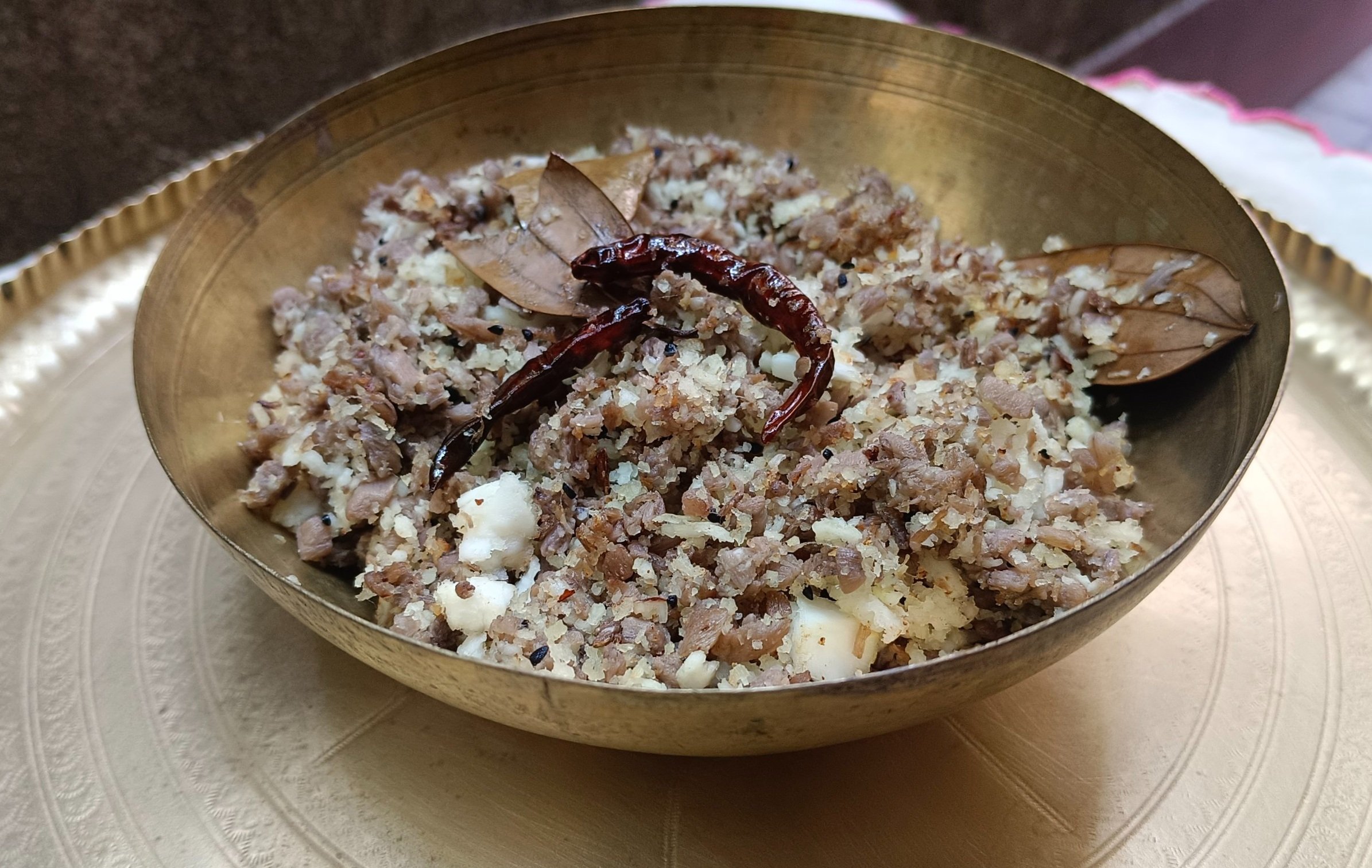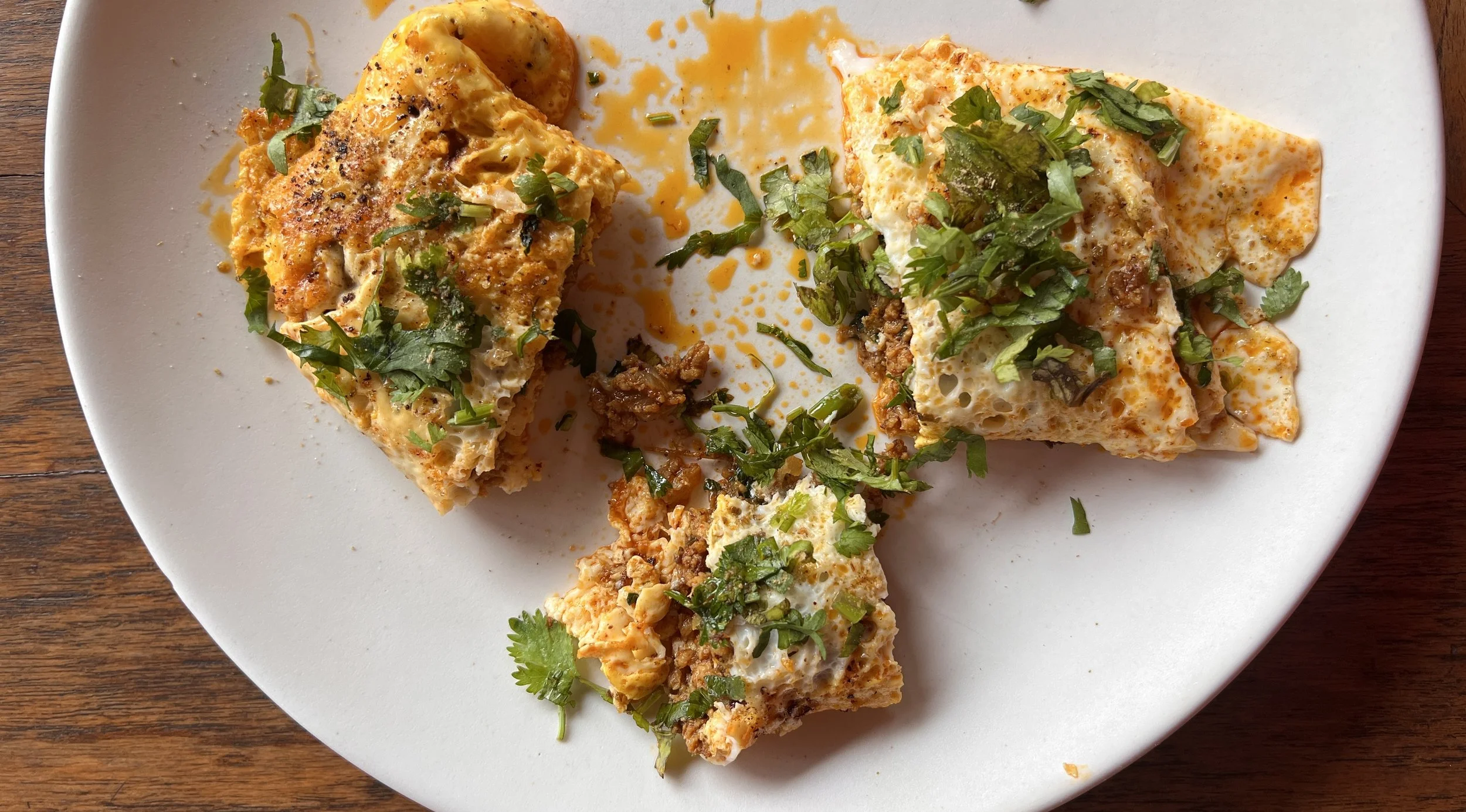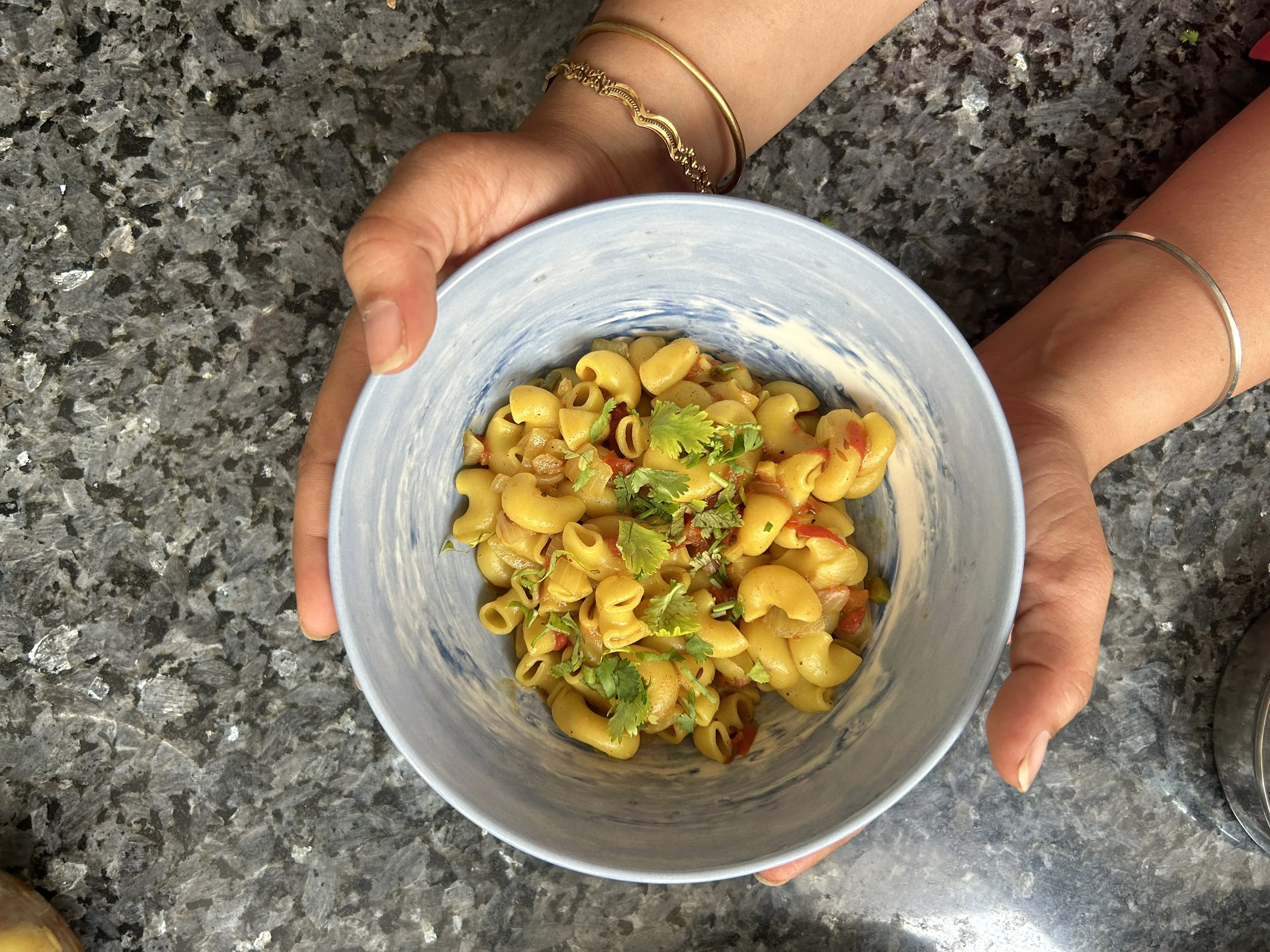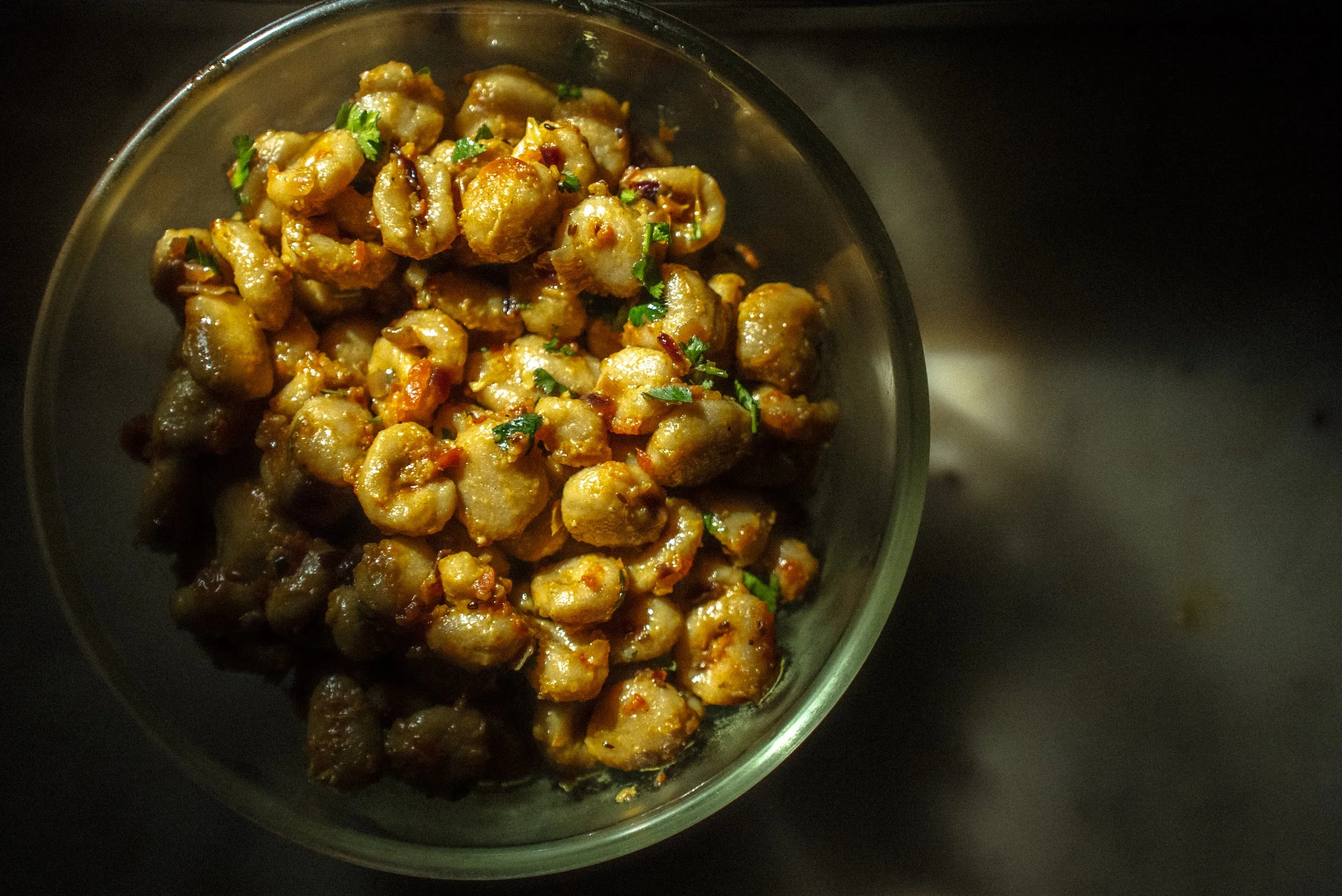How the Humble Banana Helped Bengal Survive the Famine

“There must be no waste and there must be no feasting while we fight for every ounce of food.”
During the Bengal famine, every household saw a deep shift in their patterns of food consumption, forced to use vegetables, seafood, and fruit in inventive, resourceful ways. The banana stood out—its fruit, stem, flower, and leaf all put to use—becoming a symbol of sustainability and zero-waste resilience. Suchandra Bose examines the significance of the fruit in the Bengali kitchen.
A nation’s food supply is integral to its sustenance. The absence of food is a weapon that, when wielded well, could drive most into submission. Winston Churchill wasn’t averse to using this tool to win wars. During the Second World War, when Japan threatened to advance toward India via Burma, already under Japan’s control, Churchill’s policies strategically damaged Bengal’s food supply chain, causing millions of people to grapple with starvation, malnutrition, disease, and population displacement. The ‘denial’ scheme seized surplus rice in Bengal’s coastal districts to prevent the Japanese army from using it, despite ongoing bouts of starvation, as Bengal had become the easternmost Allied front against Japan after Burma, and ultimately played a crucial role in thwarting Japan’s invasion attempts into India. The situation was so dire due to the famine that people resorted to having ‘phyan’ or rice starch to satiate their hunger for rice – a grain that forms the heart of every Bengali household.
The middle and the upper classes of society only tangentially felt the effects of the famine. But every household saw a shift in how they consumed food, where staples like rice and fish gave way to managing on whatever was available. In response, they turned to inventive ways of using vegetables, seafood, and fruits to quell their hunger, resulting in a sustainable and zero-waste culture.
Standing tall within the cuisine, is the banana, a fruit touted to have “changed the world.”
The banana has carved its winding path through history. Initially unfit for human consumption, it was domesticated through careful bio-engingeering in New Guinea, and found its way to Indian shores through South Asian exploration and commerce, as mapped in Lorna Piatti-Farnell’s book Banana: A Global History. Today, India is the biggest producer of bananas in the world.
The words ‘mocha’ and ‘kadali’ for banana trace their origins to the tribal Mundari language spoken by the tribal communities of Eastern India. Even though it is widely believed to be an ‘alien’ word in Sanskrit, Mundari was spoken by India’s tribal communities long before the arrival of the Vedic Aryans. Several dishes made with bananas have a heritage pre-dating the Famine, but were arguably revisited and reinvented during as well.
The kachkolar khoshar chorchori, for instance, is a lesson on frugality that found a place in the Bengali kitchen during the famine. Made with chopped peels of raw banana, earlier discarded, they were cooked with coconut, mustard, and whole spices. Another recipe is the kachkolar khosha bata, which involves grinding the boiled raw banana peel along with green chilies, coriander stems, and just enough water, into a paste and then sautéing in a pan with whole spices.
On the other hand, some of the other dishes go back centuries. Mocha’r ghonto is made by sauteing banana blossoms with spices, occassionally with prawns, and almost always has a generous amount of crushed coconut. Thor’r ghonto is a banana stem dish cooked slowly with cumin, coriander, and turmeric, resulting in a rich, flavourful preparation. Thor’r chechki, on the other hand, is a quicker, lighter stir-fry made with just a few whole spices.
Every part of the fruit and the plant has a place in the Bengali kitchen. The leaf becomes a plate and is sometimes used to steam fish. As mentioned previously, the stems and flowers are cooked into a variety of different dishes, and even when the fruit over-ripens, it isn’t discarded, but fried into banana fritters. Raw bananas are widely utilised in various ways.
Kachkolar jhol, for example, is a household staple to soothe an upset stomach. It is a stew made with raw bananas and whole spices and boiled until the flavours come together. The raw banana peels remain in the dish, not to be discarded. Kolar’ bora is a sweet, deep-fried snack found in almost all the sweet shops in Bengal; made with jaggery and wheat flour it’s one of those delicious concoctions that never lets an overripe banana go to waste.
Thor’r chechki
Mocha’r ghonto
But the significance of the banana goes beyond the Famine. Hunger continued to be a harrowing reality for the people long after India gained Independence. During the partition in 1947, the crisis over food continued. The new state politicians then encouraged citizens to switch over to inexpensive bananas and other tubers such as sweet potatoes instead of the more expensive wheat and rice, as the effects on agriculture after Partition were grave.
The banana was debatably not considered a substitute food; only supplementary. However, finding alternate foods to feed the country grappling with starvation was important. In his book, Hungry Nation: Food, Famine and the Making of Modern India, Benjamin R Siegel notes that Prime Minister Nehru during his address on All India Radio, insisted, “There must be no waste and there must be no feasting while we fight for every ounce of food.” He then took it a step further and went on to grow sweet potatoes, and millets alongside the trusty banana in his estate to prove that rice and wheat were not part of his household. When West Bengal's Chief Minister, BC Roy, asked Nehru for more food grains, and Nehru encouraged Roy to persuade Bengalis to change their eating habits instead. Regional tastes were secondary for Nehru given his dream of a united Nation with a single identity. Consuming bananas and sweet potatoes, instead of being subservient to wheat and rice, was a way to forge national unity through the stomach.
Today, in West Bengal many farmers have opted to grow bananas instead of rice, maize and wheat due to their high profitability and tenacious nature. But while rice is still the grain of choice, for many, it continues to be a luxury. Mocha, thor, kachkolar’ khosha, and the kola consistently add value to Bengali cuisine and its rich heritage, making the banana a testament to its good times and bad, long since its careful modification centuries ago. But the banana plant's enduring legacy today goes beyond its crucial role in dishes like ilish paturi, where hilsa is steamed, pan-fried, or oven-cooked in a banana leaf parcel; kachkolar dalna, a dish made with raw bananas mushed into tiny balls in a curry; and mochar paturi, where banana blossoms are spread out with spices on a pan and cooked. Its true significance perhaps lies in the plant’s adaptability, cost-effectiveness, and resilience—making it a humble product across all classes of society.
SOURCES:
Siegel, B. R. (2018). Hungry Nation: Food, Famine, and the Making of Modern India. Cambridge University Press.
Mukherjee, J. (2015). Hungry Bengal: War, Famine and the End of Empire. Oxford University Press.
Published in Chharpatra (original Bengali poetry collection).
National Herald India. (n.d.). Food Katha: Banana, but not from the Vedas.
Piatti-Farnell, L. (2016). Banana: A Global History. Reaktion Books.
Suchandra Bose is a Mumbai-based writer who hopes to document stories on the politics of food, gender, and film.
ALSO ON GOYA














